The Duragal steel post vs the Hot Dipped Galvanised steel post battle is a long-standing grudge match between two steely contenders.
Which steel post is better for your house project? Get the full blow-by-blow battle breakdown here.
The Battleground
Whether your project is a new house or an extension, if you are building a timber floor above ground, there’s a chance you’ll encounter the Duragal vs H.D. Galvanised steel stump battleground.
It’s not an easy battleground either. At stake are cost, longetivity, durability, corrosivity, availability and a whole host of other “itties” that cloud the decision process.
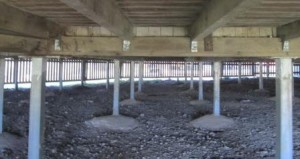
Quite often steel stumps are open to the environment, easily seen but often ignored. The steel stump battleground is a forest of columns stretching from concrete footings to the underside of timber floor frames.
Steel column lengths can vary from less than 300mm to more than 5 metres. The columns support floors, walls, roofs, belongings and families. They are the critical support structure for our buildings. That’s why it is crucial you and your construction team make the right decision.
The Villain!
The villain of the battleground is corrosion. Rust. Steel cancer. Iron oxide. Fe2O3 (thanks John!).
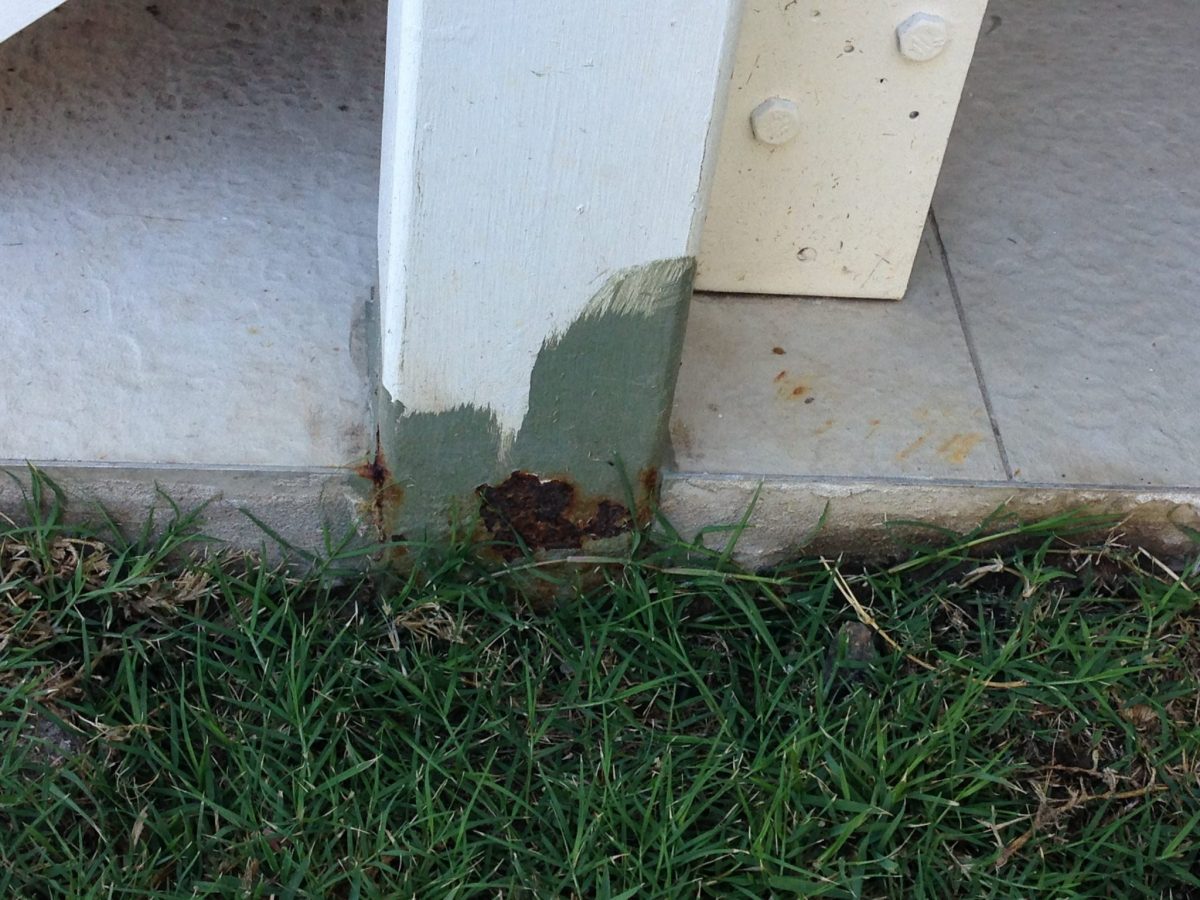
Steel’s affinity for water and oxygen is like red wine to a musketeer. Corrosion is the downfall of shiny steel stumps and the kryptonite of steel’s super strength. How can you protect yourself and your property?
The Hero!
Fortunately, there is a hero: Standing between steel and evil corrosion is steel’s shiny coat of armour: Zinc.
When applied as a molten coating onto steel, zinc becomes the hero – bonding onto the steel surface and forming an impenetrable surface that staves off steel’s weakness to water and oxygen.
But steel has a choice that it must make before the battle: It must choose from a range of armours – It must choose an armour that is light enough to be inexpensive yet strong enough to outlast the battle.
Behold the contenders!

Weighing in at 100g of zinc coating per square meter is DuraGal, marketed and sold by Austube Mills. The lightest (and cheapest) of the galvanised coatings, the zinc armour is only applied to the external surface of square (SHS), round (CHS) and rectangular (RHS) column sections.
The internal surface of DuraGal is a painted finish measuring only 35 micrometres (that’s 35 thousandths of a millimetre) thick.
Our next contender: Weighing in at 100g of zinc per square metre on inside and outside faces of box and round column sections is DuraGal Plus. It’s a better option than Duragal because the inside surface has a zinc coating too but it is slightly more expensive. If needed you can screw into DuragGal Plus or leave end caps off – but only in some environments. Check with your engineer.
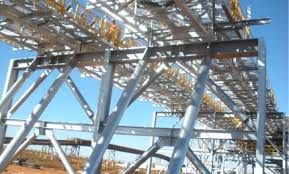
Finally, our superhero: Hot Dip Galvanising. Weighing in at a hefty 500 grams of zinc per square metre inside and out, H.D. Galvanised steel has the heaviest, strongest coat but is also the most expensive. Steel has to be fabricated and then sent to the galvanisers to be dipped into a bath of molten zinc. It takes longer to arrive on-site, makes on-site alterations harder but is super tough.
The Steel Stump Battle
It’s a fierce battle. What is the best thickness of galvanising for your project?
That’s a decision for you, your structural engineer and the builder to make.
The Provisos
There’s a couple of issues you should be aware of:
It is well known in the construction industry that DuraGal steel and the chemicals in concrete react and fail the thin galvanised coating on DuraGal steel prematurely.
If you are casting DuraGal steel into a concrete footing, ask your structural engineer to document the precaution you need to take specific to your situation.
Yes, we’re talking about keeping your galvanised steel posts out of contact with the ground, uric acid and some other chemicals. Check with your structural engineer for your project.
Also, for the structural engineers and builders, don’t forget the requirements of National Construction Code NCC2019 Clause 3.4.4.4. Duragal has to be painted if it is in an external location (ie under a house). Check out the NCC for more information.
References
We used the following websites to compile this article.
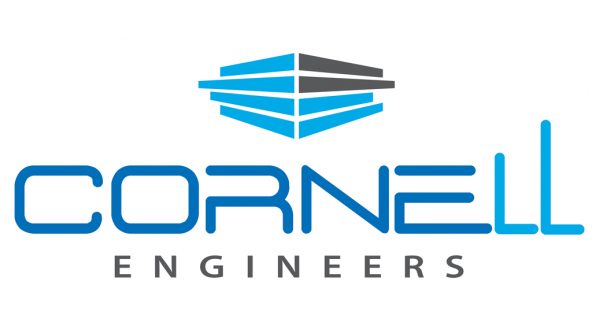

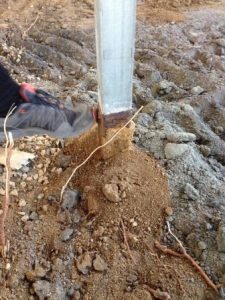
25 replies on “Steel Posts – Duragal vs H.D. Galv”
Problem with tradie advise us most times you don’t see or hear about the job down the track so I would say the restumper who replaced so many is the only tradie that really knows the answer and you heard it
I am a painter with 45 yrs exp and painting any steel with appropriate coating is a must imo
But also I’m going for hdg…plus painting the whole stump with a bitumen type compound and cap both ends no welding
I just found the above article on posts and was after some info. Given that the hot dipped gal posts are suspended in the concrete footing is there any chance over the lifetime of the posts that the footing cracks and possibly allows termites to enter through the holes in the bottom flange then up into the house through the top flange.
Also if using hot dipped posts for a restump with steel beams to open up an area, How are the posts attached to the beams. Bolts or welded or both. If Welded would that not burn off the gal coating and reduce its effectiveness even after the application of a cold gal over the welds
Thanks
Derek
Some good questions Derek!
It is possible, but not probable that termites will go down into a cracked concrete stump, find their way through the missing baseplate (we prefer there to be a baseplate) up the steel stump, through the poorly welded cap plate into the timber. Phew. It sounds like the roadtrip from hell.
So many things have to go wrong for that to happen.
So in no particular order:
– Have a base plate on your columns burined in concrete
– Have a fully welded cap plate on top of your post.
– Repair damaged galvanising by touching up with cold gal.
– Have regular pest inspections.
– Ensure the steel is painted before it is cast into the concrete.
Pray that termiotes don’t like hellish roadtrips.
Best of luck.
Matt Cornell
Thanks all for the good info and links.
IF the base of a steel stump does have signs of rust because it has been n contact with earth, is it effective to treat the rust; wire brush, rust converter, cold gal, sealer x n, waterproof bituminous membrane, and then build the concrete pad up higher?
Does the concrete keep moisture away or would it merely keep the earth and its attendant chemical away?
Is there any concrete additive that makes it more waterproof?
Being a House restumper myself, most of my work is replacing duragal and supergal steel columns that have only been in the ground between 5 to 9 years with genuine hot dipped galvanized steel house columns that will not rust.
The start of 2022 to the end of 2022 I have taken 14 ton of duragal and supergal steel columns to the scrap recycling people.
Great article written in a interesting format,
however,
I find it difficult to believe that an shs Dura Gal posts in the majority of cases rust out in 5 to 9 yrs. This would be exceptional circumstances likely where there is exceptional moisture present.
The home owner with the correct not expensive maintenance schedule could prevent this issue.
hello i am just wondering if u can paint the duragal post and bull nose to make it more attractive as a house fence if so what kind of paint would be best to use thank you
Hi Trisha
I’m not a paint expert. Perhaps try explaining your painting project to your paint supplier – especially if they are a professional paint supplier like Paint Place https://www.paintplace.com.au/.
Regards
Matt Cornell
Cornell Engineers
Hi
I am wanting it use Duragal as my fence post when building wing fences to the house. What precautions do I need to take when cementing in the posts.
How long could I expect these posts to
Last in comparison to using Hardwood posts.
Many Thanks
Wayne
Wayne, Duragal posts for fencing need the same care as house posts. Have a look at this website for some more information: https://profence.com.au/installing-fence-posts-concrete/
thanks Matthew
We have to replace our 30 year old wooden private power pole with a H.D. Galvanised 4.5mm thick steel pole due to site constraints.
I found your article as I was researching whether I could proactively increase its service life by applying a zinc coating before our electrician installs it.
From what I’ve read there would be no real advantage to doing this. Please correct me if I am wrong.
Also, is the use of quick setting concrete likely to exacerbate corrosion more so than standard concrete or using a tampered blue metal base?
Grateful for any advice
Might want to fix this up – ‘rust’ is Fe2O3, the Iron Oxide III.
Thank you John. You are of course quite right. Fe2O3.
Everyone knows and agrees that DuraGal posts need additional protection if cast into concrete pads, if we want it to last many years , but what protection ? .. Everyone will tell you … “Ask your structural engineer … ” Shame that we do not have structural engineers in Australia , otherwise someone would “dare” to take a “risk” and recommend something. Are we all afraid to be sued if our opinion work out no to be the best possible ?
Actually Nick, there’s some very handy advice contained in the National Construction Code NCC2016 available here for free. https://www.abcb.gov.au/ncc-online/NCC
Kane,
I fully agree with this document. Durgal in soil, is like having a Tissue Paper for a Rain Coat.
As a Forensic Structural Engineer, I have seen too many failures to allow Durgal to be in contact with soil. A SHS may last 5 years, and not 50 Years.
What would be the effect of including a simple layer of damp proof course stocking/sock…between the durogal post and it’s stump or other such support surface? whaddya mean they don’t make’em?
A very useful blog
I had a Welding contractor weld 10mm Baseplates to my Steel House stumps and Verandah Posts.
The Duragal is 3.5mm thick and the stumps are around 1300mm long.
He sprayed cold Galv over the plates and the welding.
He assures me that this will be there for 70 years.
Does anyone have an opinion on this.?
Here’s a second opinion about the effectiveness of cold galvanising.
https://galvanizeit.org/knowledgebase/article/what-does-the-cold-galvanizing-process-consist-of
Here’s a third opinion:
https://www.itwpf.com.au/galmet/faqs/
Check out what they say about surface preparation before using cold gal spray and then have another chat with your welding contractor.
Matthew what is your opinion about the concrete protecting the steel ?
I am a builder and an Engineer and soon I am doing a house project with stump and pad and planning to use 75 by 75 by 3 mm square hollow section Dura Galv
I know dura galv is much less resistant to rust than hot dipped but the cost is like half the price so I thought I could raise my concrete pads above the ground level and put a cone to them so nothing is in contact with surface water , what is your opinion is this wise ?
Hi Ali Mohamad
The NCC says you can use DuraGal stumps (yes they are much cheaper than full hot-dip galvanised stumps) so long as you paint the entire SHS stump. The doming of the concrete is another important aspect. Doing both will give your DuraGal stumps a good chance at remaining rust free. Don’t forget to fully seal your stumps also so that the inside of the steel column doesn’t rust.
Matt Cornell
hello I think if the steel is embedded inside concrete with good cover then the concrete protects it not your cold galv , in fact, the concrete has chemicals which will probably strip the cold galv coating anyway but the concrete protects the steel because its alkaline, I have seen rio bars come out of decades old pavings you see the steel is like new with no rust ,,,
Ali you are the only one to mention RIO STEEL. I am a Carpenter learned my trade in Commercial construction IE steel and concrete.
What I learned was this Attention to the amount of concrete COVER is to protect steel from moisture penetration. EG above ground may be 40mm or below ground 60/100 mm. Exposed steel at the concrete surface is vulnerable even if hot dip gal. There was always a specification to protect this area from dampness and AIR. Hence the very common use of TAR. Good use of pencil vibrators were commonly specified to increase the concrete density by releasing as much air as possible from the concrete. Steel and concrete are highly compatible. All we have to do is give attention to the vulnerabilities. Damp and Air, exclude them by any means and you will succeed in prolonging the structure’s life.